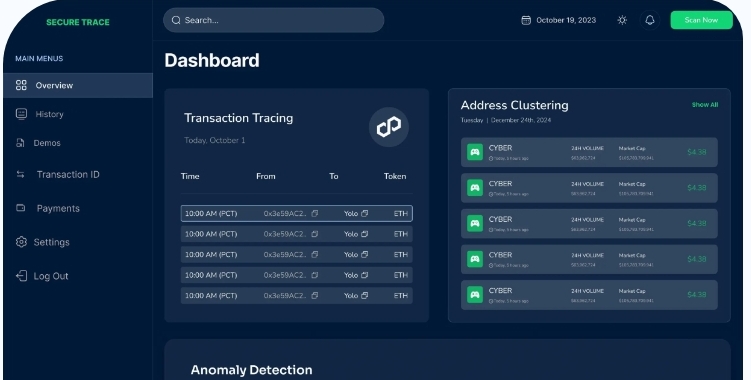Customer Experience in Cybersecurity: The Strategic Edge for Web 3.0
In today’s digital-first economy, customer experience (CX) plays a crucial role in business success. This is especially true in sectors like cybersecurity, where trust, transparency, and ease of interaction determine customer loyalty and satisfaction. With the rise of blockchain and decentralized applications (DApps), the stakes have grown higher. In such a dynamic environment, how can organizations deliver top-notch security without compromising on user experience?
The answer lies in redefining CX in cybersecurity—not as an afterthought, but as a foundational element.
The Shift from Complexity to Clarity
Cybersecurity has long been associated with complexity. Most users view security systems as necessary hurdles rather than enablers. However, in an era where digital identities, crypto wallets, and smart contracts are commonplace, this perception must change. Simplifying these interactions for users, without diluting the underlying security, has become a strategic imperative.
This transformation is best captured in the words of Abhishek Singh, Co-Founder of SecureDApp:
“At SecureDApp, we see customer experience (CX) in cybersecurity as more than just safeguarding data—it’s about building trust, ensuring transparency, and simplifying interactions. As cyber threats become more sophisticated, the user journey must also evolve—from navigating complex security processes to experiencing seamless, confidence-inspiring engagement. Our CX-first philosophy prioritizes accessibility, education, and empowerment, even within the most robust security environments. The greatest challenge lies in making security understandable for non-technical users without losing technical rigor. Looking ahead, CX in cybersecurity will be proactive, AI-enhanced, and tailored to individual risk profiles. In today’s landscape, exceptional CX isn’t a compromise in cybersecurity—it’s a strategic advantage.”
Abhishek Singh, Co-Founder of SecureDApp
CX as a Trust-Building Mechanism
Building trust begins with clarity. Customers need to know what data is being protected, how it is secured, and what role they play in the ecosystem. However, trust doesn’t come from simply explaining processes. Instead, it grows through consistent, reliable, and intuitive interactions that make users feel in control.
When organizations approach cybersecurity with a CX-first mindset, they create a more inclusive environment. Even non-technical users can engage with confidence, understanding that their assets are secure and their experience matters. This approach enhances user loyalty while reducing friction—a win-win for both developers and end-users.
SecureDApp: Merging Robust Security with Human-Centric Design
SecureDApp exemplifies this CX-first approach. As a leading blockchain security platform, SecureDApp offers a full suite of tools to safeguard DApps. These tools range from smart contract auditing to real-time monitoring and forensic investigations. Nevertheless, what truly sets SecureDApp apart is how it makes these advanced technologies accessible and comprehensible to a wide range of users.
Their services don’t stop at just providing protection. Instead, they empower developers with actionable insights while keeping end-users informed. Whether through hybrid smart contract audits or intuitive dashboard interfaces, SecureDApp ensures every user touchpoint reflects their commitment to experience and security.
The Role of AI and Personalization in CX-Centric Security
Moreover, the future of CX in cybersecurity points toward personalization. Threats are becoming more targeted. Therefore, defenses must become smarter and more adaptive. Artificial intelligence (AI) and machine learning (ML) are crucial in achieving this evolution.
CX, when augmented by AI, can preempt user risks, flag anomalies faster, and offer context-based recommendations. For example, a user flagged for suspicious activity might receive real-time guidance, improving both their safety and understanding. In this way, AI bridges the gap between complexity and clarity—delivering fast, personalized, and secure experiences.
Empowering Users Through Education
Another cornerstone of a great cybersecurity experience is user education. Often, security failures stem from user error rather than technical flaws. Hence, platforms must invest in educating their users, not just through documentation, but through contextual and in-app guidance.
SecureDApp’s commitment to education plays a vital role here. By demystifying blockchain vulnerabilities and breaking down audit reports, the company enables both developers and users to stay informed. As a result, users can participate more actively in safeguarding their digital interactions.
Accessibility and Inclusivity: Designing for All
Designing security features for the tech-savvy few no longer suffices. Instead, security platforms must be inclusive. This means designing interfaces and workflows that are easy to understand, accessible to people with varying abilities, and localizable across geographies.
When accessibility becomes a core tenet of CX, adoption improves dramatically. Furthermore, inclusive design reduces user errors and support queries, ultimately enhancing platform credibility and performance.
CX and Compliance Go Hand-in-Hand
Regulatory requirements are growing more stringent worldwide. However, CX can act as a guide through these regulatory mazes. Transparency about compliance standards, easy-to-access privacy settings, and clear consent mechanisms help build trust and prevent friction.
SecureDApp’s compliance-driven approach ensures that DApps meet the highest security and privacy benchmarks. At the same time, it avoids overburdening users with legal jargon. By weaving legal compliance seamlessly into the user flow, the platform further strengthens its CX strategy.
CX: Not an Add-on, But a Strategic Advantage
As Abhishek Singh rightly notes, the intersection of security and CX is not a compromise—it’s a strategic edge. Companies that prioritize CX in their cybersecurity offerings will not only attract but also retain users in a competitive digital landscape.
Users no longer tolerate clunky interfaces, cryptic warnings, or opaque policies. They expect intuitive, secure, and empowering digital experiences. The companies that can deliver this fusion will lead the future of secure, decentralized ecosystems.

Conclusion: The CX-Driven Cybersecurity Era Has Arrived
To conclude, CX in cybersecurity has evolved from a secondary concern to a primary differentiator. Platforms like SecureDApp are pioneering this shift by making security smarter, simpler, and more human-centered. Their work underscores an important truth: customer experience is no longer the responsibility of marketing alone. It is a holistic business strategy—especially in the digital security space.
As threats grow more sophisticated, so must our methods to defend against them. But above all, we must remember that behind every transaction, wallet, and contract, there’s a user. When we protect their journey, not just their data, we unlock the full potential of technology.


